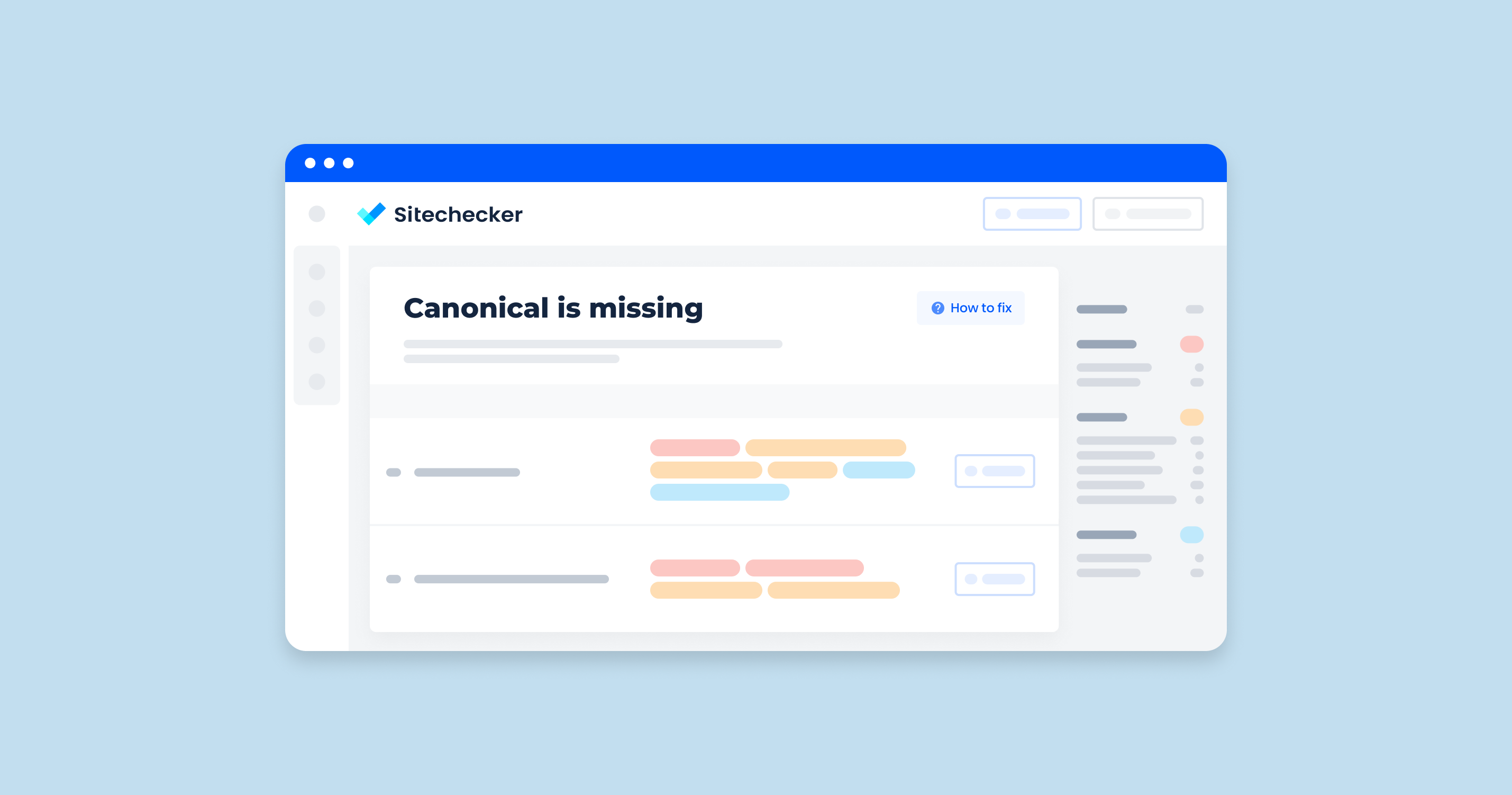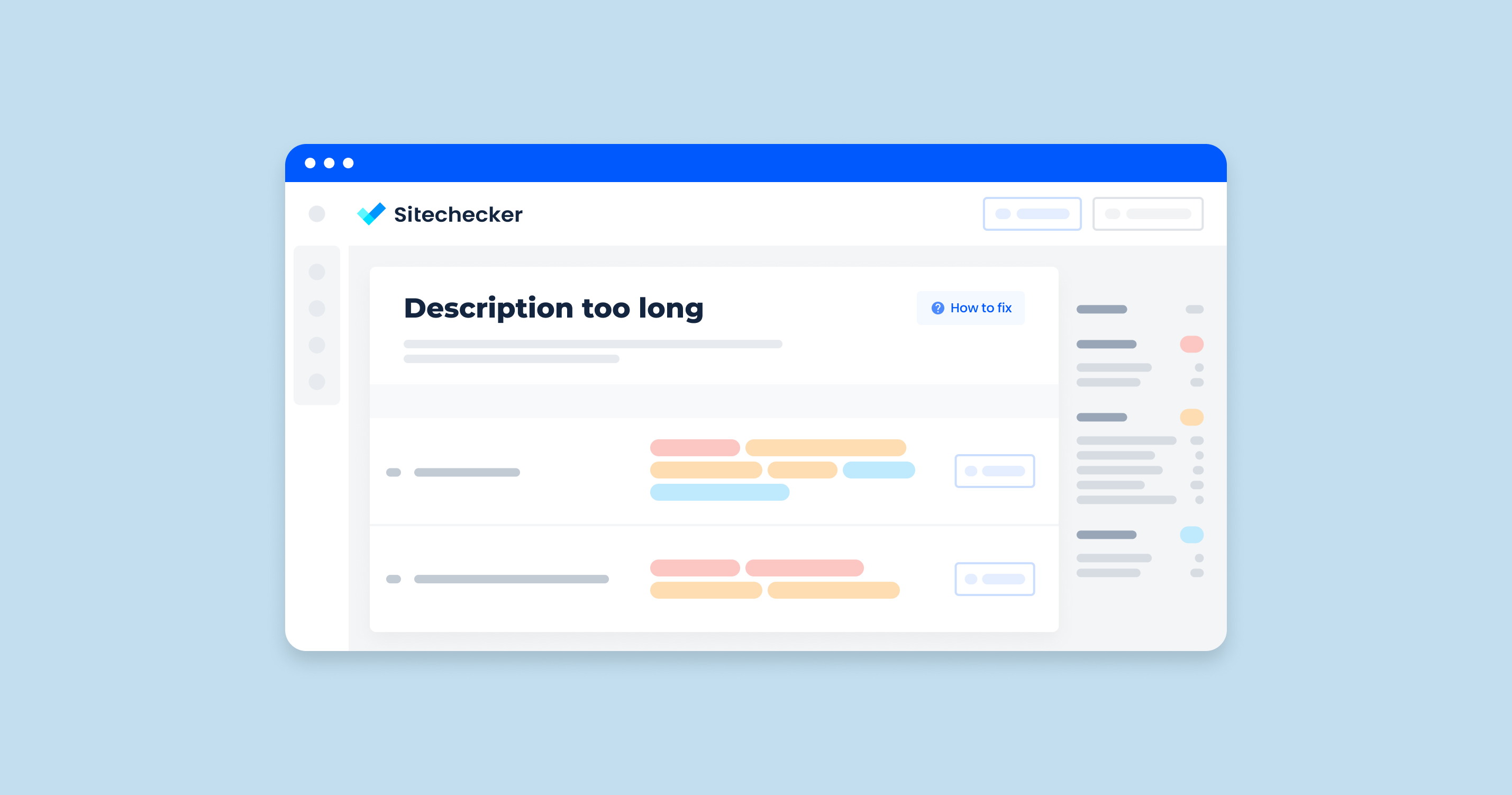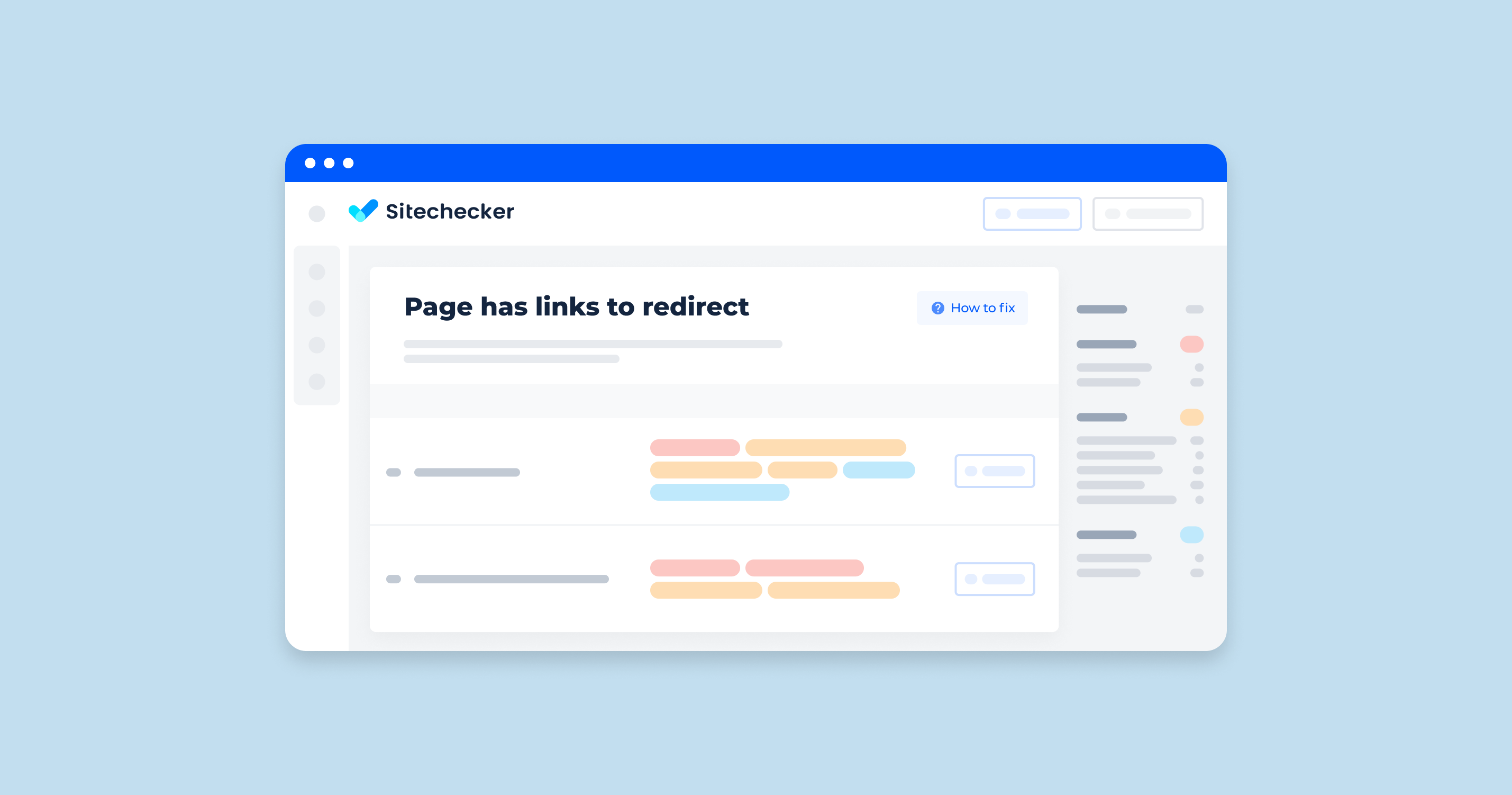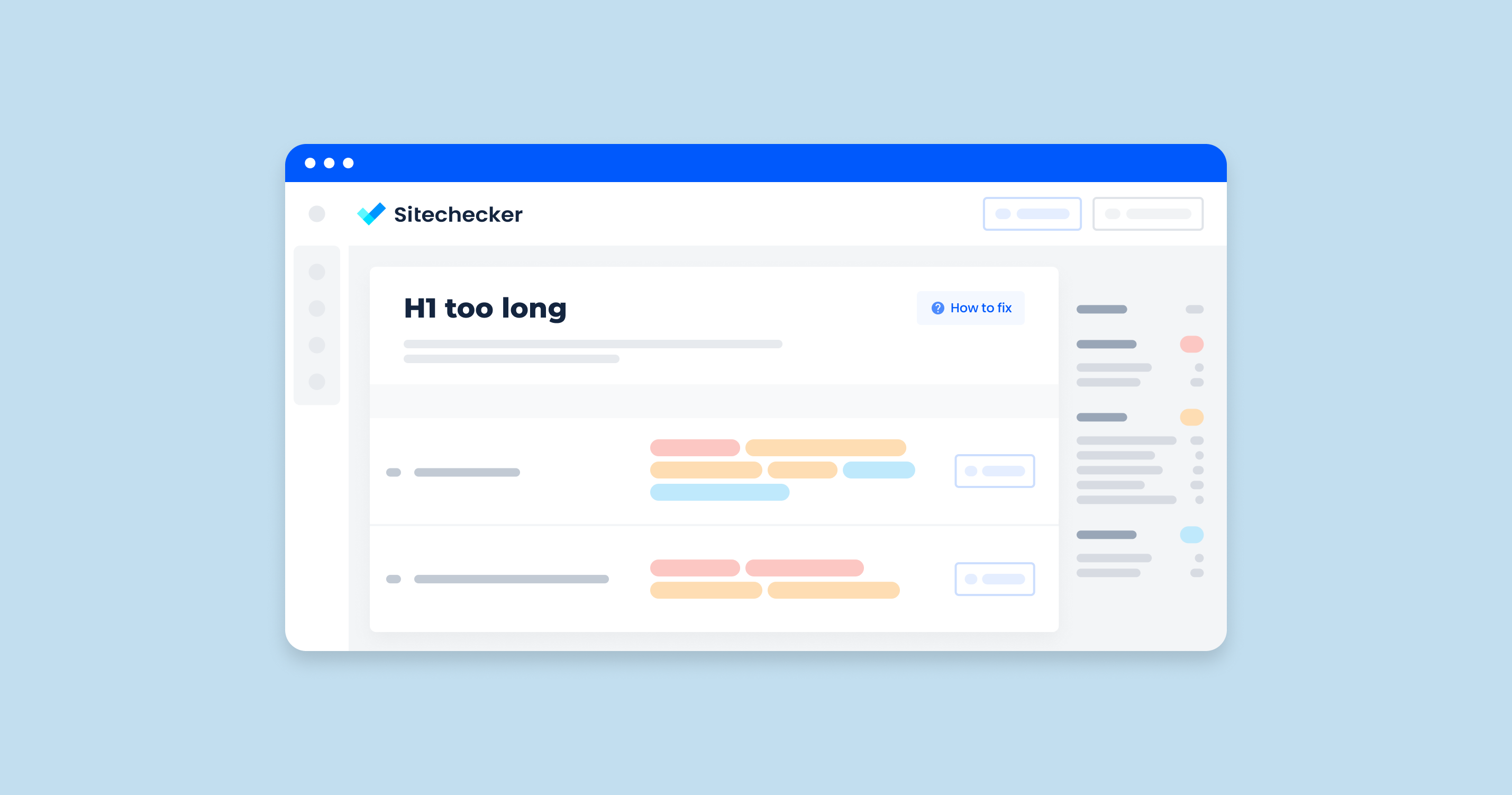Canonical is missing issue means that there are pages that have no canonical tag.
Why it is Important
<…>Canonical URL is the URL of the page that Google thinks is most representative from a set of duplicate pages on your site. For example, if you have URLs for the same page (for example: example.com?dress=1234 and example.com/dresses/1234), Google chooses one as canonical. Note that the pages do not need to be absolutely identical; minor changes in sorting or filtering of list pages do not make the page unique (for example, sorting by price or filtering by item color).<…>
The rel=canonical tag is an HTML element located in the head of an HTML document and aids in preventing duplicate content issues. A typical rel=canonical tag:
<link rel="canonical" href="http://www.example.com/">It often happens that multiple URLs lead to the same page content (this is especially true when making use of URL parameters). Alternatively, there might be a huge content similarity between multiple pages, in which case it would make sense to only crawl or index one of them. In both cases, the webmaster might use the rel=canonical element to identify which of the mentioned URLs are representative of the entire collection, in other words, which one is the preferred or “canonical” URL that needs to be indexed.
Omitting the rel=”canonical” tag doesn’t denote a duplicate content issue. Nevertheless, when having many pages with highly similar or duplicated content, omitting this rel=canoncial tag can result in such issues with a high probability. Note that duplicate content issues can be highly detrimental to your site in terms of SEO.
<…>Google uses the canonical pages as the main sources to evaluate content and quality. Google Search result usually points to the canonical page, unless one of the duplicates is explicitly better suited for a user: for example, the search result will probably point to the mobile page if the user is on a mobile device, even if the desktop page is marked as canonical.<…>
Also, you can check out the full guide: “How To Fix Canonical Is Missing?” on Sitechecker.
How to Check and Fix the Issue
Check the URLs in question and in case duplicate or highly similar content is detected, act to resolve the issue. First, decide which of the URLs with resembling or duplicated content should be chosen as the canonical version.
Use Sitechecker to keep track of various canonical-related problems including missing canonical tag.
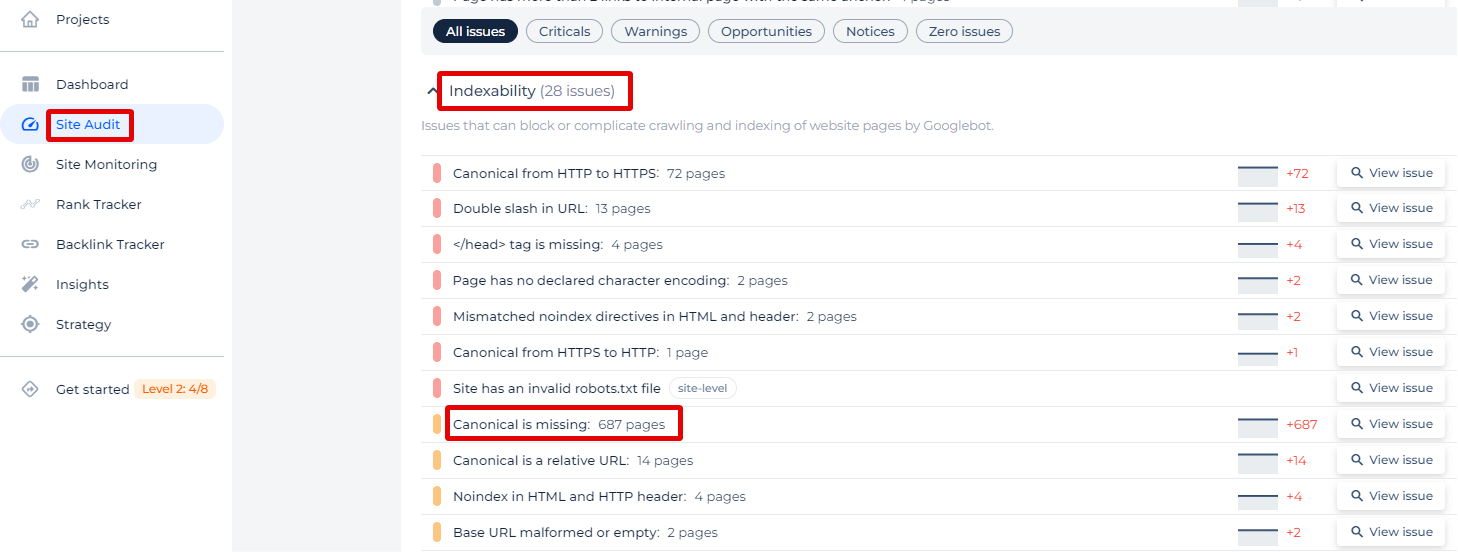
Exploring the issue further will provide a list of impacted pages and the capability to examine their source code.
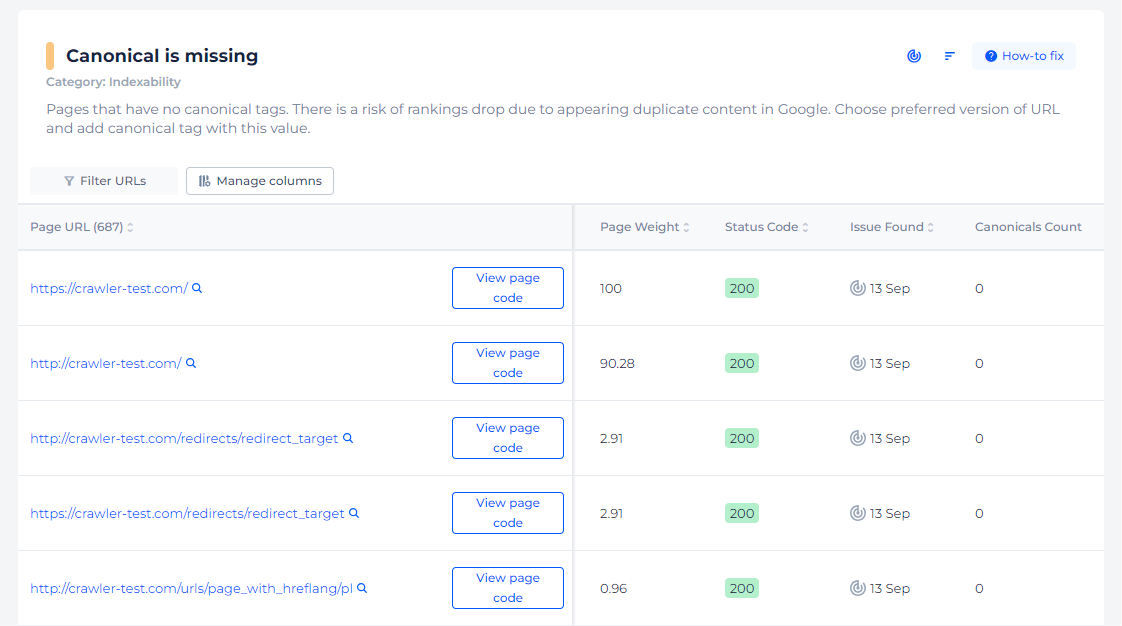
Next, add the rel=canonical tag to all pages in the respective group of URLs, while pointing the target to the preferred (canonical) URL.
Find and Fix Missing Canonical Tags with Ease!
Ensure Your Canonical Tags are in Place with Sitechecker!
